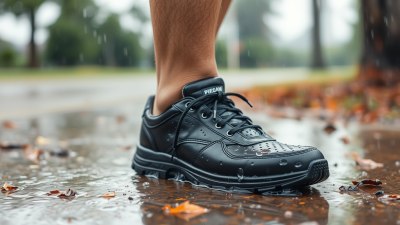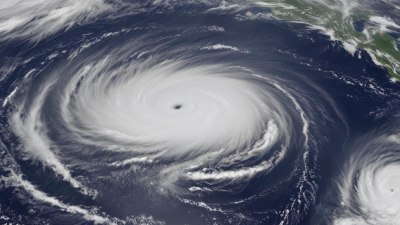What No One Tells You About Traveling to a Hot Country with No Shade
Discover essential tips and hidden challenges of traveling to hot, sun-drenched destinations.

Traveling to a hot country with no shade can be both an exhilarating and demanding experience. While the warmth of the sun can be inviting, it's essential to understand the implications of spending extended periods outdoors without any shade. From heat exhaustion to sunburn, there are numerous factors to consider when preparing for such adventures. In this article, we will explore various aspects of traveling to sun-soaked regions, including health precautions, packing essentials, and the importance of planning activities wisely.
Understanding the Risks
When visiting destinations that are predominantly hot and arid, such as deserts or tropical climates, it's important to recognize the specific health risks associated with prolonged sun exposure. Sun-related health issues are more common than one might think. Heat exhaustion, heat stroke, and severe sunburn can all occur if adequate precautions are not taken. Heat exhaustion, caused by excessive heat exposure, can lead to symptoms such as dizziness, nausea, weakness, and headache. Without addressing these symptoms promptly, heat stroke, a potentially mortal condition, can develop.
Moreover, prolonged exposure to the sun can result in painful sunburns, which can ruin your trip and result in long-term skin damage. Skin cancer is also a significant concern that can arise from consistent sun exposure over the years. Therefore, understanding your personal limits and the conditions of the destination you're visiting is crucial for any traveler.
Preparing for the Journey
Preparation is key. Before embarking on your journey to a hot country, you should research the specific climate of your destination. Knowing the temperature ranges and expected weather patterns can help you plan your activities accordingly. Check weather forecasts regularly, but also be mindful that forecasts might not account for sudden changes in intensity.
Additionally, packing the right gear is crucial. Lightweight, breathable clothing is essential in a hot climate. Fabrics like cotton or linen allow air circulation, keeping your body cooler. Hats with wide brims provide extra protection from the sun’s rays. Sunglasses with UV protection are also vital to shield your eyes from harmful UV light. Since you may not find shaded areas, ensuring that you have a portable umbrella or a pop-up sun shelter can help create your own shade whenever needed.
Timing is Everything
When exploring hot destinations, the time at which you schedule your activities plays a crucial role in your comfort levels. The sun typically reaches its peak intensity during midday, usually between 11 a.m. and 3 p.m. To avoid the strongest rays, consider planning outdoor activities during cooler parts of the day, such as early morning or late afternoon. This practice not only helps in managing heat exposure but also enhances your overall experience, as the lower sun often enhances natural sights.
It's also advisable to take frequent breaks in shaded areas or indoor spaces to allow your body to rest and cool down. Look for local cafes or shops where you can hydrate and recharge before continuing your adventures. Hydration is essential—consuming water regularly can help prevent overheating and dehydration.
Stay Hydrated
Staying hydrated is paramount when you are in a hot environment, especially if shade is hard to come by. Water should not only be your primary beverage but should also be consumed frequently. It’s advisable to drink small amounts of water consistently throughout the day instead of waiting until you feel thirsty. By the time you're feeling thirsty, your body might already be experiencing dehydration.
Additionally, consider incorporating electrolyte-rich beverages or snacks into your diet, particularly if you are engaging in physical activities. Sports drinks, coconut water, or electrolyte tablets can replenish vital minerals lost during perspiration. These steps will help maintain your energy levels and keep you feeling alert during your travels.
Nutrition Matters
The food you consume can also play an important role in managing your energy levels in a hot climate. When you are in a hot country, it’s wise to focus on lighter meals that are rich in fruits and vegetables. These foods have a higher water content and can aid in hydration. Think of salads, smoothies, or fresh fruit bowls. Heavy or greasy foods might weigh you down and contribute to feelings of sluggishness.
Also, be careful about where you eat; local cuisine can be enticing but may not always align with your dietary preferences or needs. Clean, reputable dining options reduce the risks of foodborne illnesses, which can significantly affect your travels.
Sun Protection Strategies
While gearing up for sun exposure, sunscreen is an absolute must. Select a broad-spectrum sunscreen with a higher SPF (30 or above is generally recommended) and ensure that it is water-resistant if you expect to sweat or engage in swimming. Apply sunscreen generously at least 30 minutes before sun exposure and reapply every two hours or immediately after swimming or excessive sweating.
Investing in physical sun protection such as UV-protective clothing can be beneficial as it offers an extra layer of defense against harmful rays. Certain brands have developed clothing designed specifically for sun protection that meets industry standards for UPF (Ultraviolet Protection Factor). These garments can be particularly useful for those who will spend extended time outdoors.
Recognizing the Signs of Heat Stress
Understanding the symptoms of heat-related illnesses can be lifesaving. Heat exhaustion may begin with excessive sweating and weakness but can escalate to a rapid pulse, nausea, and even fainting. If someone is experiencing heat exhaustion, they should be moved to a cooler place, laid down, and provided with water. Conversely, heat stroke is indicated by an absence of sweating, an elevated body temperature (104°F or higher), confusion, or loss of consciousness. Heat stroke is a medical emergency and requires immediate attention.
Ensure that you’re educated on these conditions not only for yourself but also for your travel companions. Being aware of the symptoms can prevent a serious issue while traveling and ensure everyone has a pleasant experience.
Making Use of Technology
With advancements in technology, there are various tools and applications specifically designed to assist travelers in hot climates. Weather monitoring apps can provide real-time updates on temperature and sun intensity, helping you plan your day better. Furthermore, even smartwatches can be helpful as they often include features that track hydration and UV exposure.
Take advantage of these technological aids to enhance your travel experience. Some apps can remind you to drink water, apply sunscreen, or seek shade, ensuring you remain aware and responsible throughout your travels.
Cultural Considerations
Every region has its own customs and etiquette, especially when venturing to significantly hotter countries. Understanding local customs regarding dress code, particularly when visiting temples or religious sites, is crucial. Many places may require you to wear modest clothing, which can be challenging in hotter climates. Seek out lightweight, breathable options that cover your body while adhering to local norms.
Engaging in local cultural practices, respecting traditions, and understanding regional customs will enrich your travel experience, allowing you to forge deeper connections with the local communities. Often, locals can provide you with insightful tips on how to effectively manage the heat and embrace their unique customs.
Traveling to a hot country with no shade can indeed be a thrilling adventure. However, understanding the ramifications of being under the blazing sun for an extended period is vital. By preparing adequately, staying hydrated, respecting your body’s limits, and employing effective sun protection strategies, your travel experience can be enjoyable and rewarding. Embrace the journey with knowledge and awareness, and you will surely return with unforgettable memories of your time spent in the sun.











